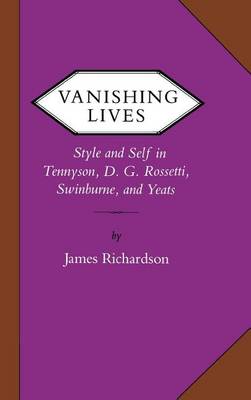Victorian Literature and Culture
1 total work
One of the characteristic features of Victorian poetry is dimness, a vanishing away-things blur with the motion of their passing, which seems inseparable from the mind's fading as it lets them go. Tennyson, Rossetti, Swinburne, and the young Yeats are elegists of the self; they render life as transparent, ghostlike, dissolving, ungraspable, nearly unrememberable. This vanishing away, this dimness, of Victorian poetry is most obvious in the twilights, mists, shadows, deep horizons, and flowing waters of its central landscape, but it is also a matter of sound and syntax, of repetition and rhythm, texture and line movement. Vanishing Lives examines these features and links them to larger issues, such as the psychology of the individual poets, and the Victorian and modern frames of mind. The tendencies under consideration are less ideas than forms or styles of feeling. They are so universal in the nineteenth century that they may not seem to call for comment, but for all their vagueness they are deep, powerful, resistant to change-an essential stratum of the experience of Victorian poetry. For poets like Yeats, who struggled to move beyond them, they were far more than the trappings of an outmoded poetry. They were a deeply ingrained aesthetic, a style, a morality, not only a way of art to be revised, but a way of living to be outgrown-a Tennysonian way.
